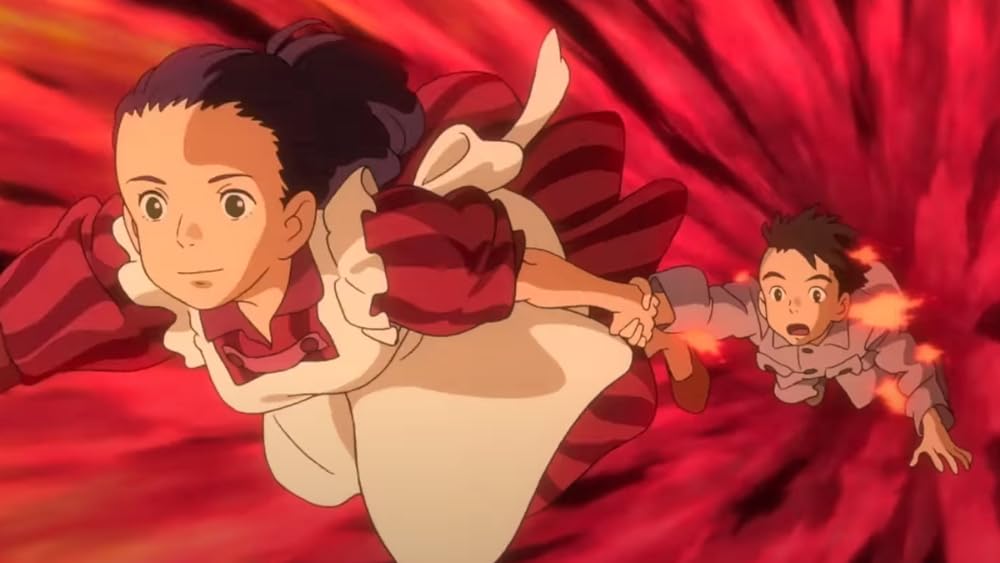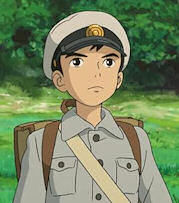At age 82, Hayao Miyazaki, the world’s greatest animator, has created another film of exceptional artistic presentation. Ten years ago, “The Wind Rises,” thought to be his last film, was nominated for an Oscar, but lost to Disney’s “Frozen.” Now, “The Boy and the Heron” is again on the list but set against Disney’s “Wish.” Will its Golden Globe win on Jan. 7 be a portent of good Oscar fortune?
Famously, Miyazaki has said, “Easy-to-understand movies are boring. Logical storylines sacrifice creativity. I’m all about breaking conventions. Kids get it. They don’t operate on logic” (Medium).
Whether you are a kid or not, “The Boy and the Heron” is abstract and I found it challenging to follow. So, I did a little research and came up with three bits of information that I found helpful.
First, in Japan the white (or gray) herons represent messengers of the gods who are symbols of purity and transition. In Miyazaki’s tale of loss, a young boy loses his mother in an air strike in Tokyo. He feels guilty that he didn’t save her, hopeful that because he didn’t see her dead body she might still be alive, and conflicted because he is expected to accept his father’s new wife. The heron acts as his primary guide through his interior struggle and transition.
Second, in Japan the influence of the Shinto, Buddhist and Daoist religions on Miyazaki and his Ghibli Studio is well-known. “This Buddhist-Shinto-Daoist potion is brought together by a concern about our lost connection with the natural order of things — how so much of the modern world yanks us away from the path (or Dao, if you like) that we ought to be on. The world we live in is one of thorns, hurdles, distractions, false friends, and alluring dead ends” (Big Think).
Hayao Miyazaki is an ardent pacifist and devotee of harmony. But when his adorable, sweet pillow beings in “The Boy and the Heron” are chased and devoured by big birds who eat them in order to survive, he shows us a world that is also violent and complex.
Still, “The Boy the the Heron” exhorts the next generation to make the world a better place. I was overcome by the role of the boy’s mother, whom he meets in a time shift as a young girl. She points him towards his path, passing the torch on to him as Miyazaki passes the torch on to new storytellers and the next generation of stewards of the world order.
Last, it is helpful to note that Miyazaki attributes the 1937 novel, “How Do You Live?” by Japanese children’s literature author Yoshino Genzaburo, as inspirational for his script. This story has been included in Japan’s elementary and middle school textbooks and “follows a 15-year-old boy who, guided by his uncle’s diary and letters, contemplates issues such as friendship, wealth disparity, bullying, and society, seeking to clarify the ‘value of being human’ and the ‘attitude one should have as a human being’” (Bone).
“How do You Live?” is also the Japanese title. But when asked if the movie answers that question, Miyazaki has responded, “I am making this movie because I do not have the answer” (IndieWire).
Meticulous, it takes Miyazaki one month to direct his 60-person team’s hand-drawn production of one minute’s worth of film. But the fluid, intricate abstract details of birds and wild segues of spectacular feats of animation may cause confusion.
I love Miyazaki for his ideologies of peace, integrity and social justice. His “ Princess Mononoke” and “The Wind Rises” are favorites. But “The Boy and the Heron” is more challenging to understand and distracting with its extraordinary artistic scope. To his credit, perhaps Miyazaki was able to finally free himself from the compromise of box office expectations and soar with an artistic expression of his own design for this last film. The voters for The Golden Globes gave him credit. Let’s see what the Oscars do.

Credits
Director and Writer: Hayao Miyazaki
Producer: Toshio Suzuki
Voices: Soma Santoki, Masaki Suda, Aimyo, Yoshino Kimur, Shohei Hino, Ko Shibasaki and Takuya Kimura
Cinematography: Atsushi Okui
Editor: Takeshi Seyama
Production Company: Studio Ghibil
Soundtracks: Chikyûgi (Spinning Globe) Performed by Kenshi Yonezu
Release: July 14, 2023 (Japan), Dec. 8, 2023 (US)
Official Website and how to view: https://www.toho.co.jp/movie/lineup?modal_open=kimitachihadouikiruka
. . .
Join us on Facebook at
http://www.facebook.com/itsjustmovies!
